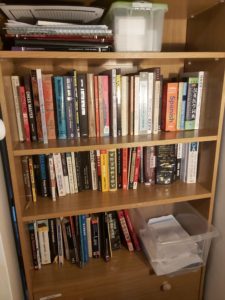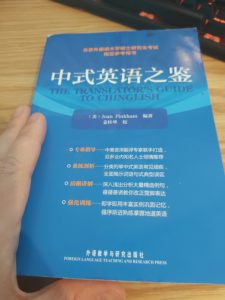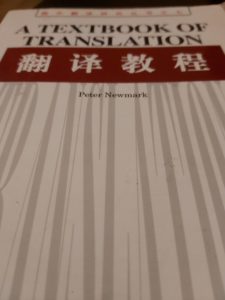My Review and Thoughts of Some Chinese to English Translation Books
Introduction

In this article I’m going to review some of the best known Chinese to English Translation books currently out there on the market. Every now and again I’ll come back and see if there are newer books which I will then add to my list, please let me know if you know of any which I am not aware of. I’m going to add affiliate links to buy these books, and I will make a commission if you buy them through my links, but I promise to review them honestly. Also I would be much happier if you were to purchase them from anywhere other than Amazon, so I am not including Amazon links.
I’m assessing these translation books not from the perspective of an academic classroom but for a reader who wants to improve their own Chinese to English translation skills. It’s important for us all to keep up our reading and continually improve our skills and I hope the below will help you decide where to place your hard earned cash, and invest your time!
Pretty much any half decent text book will help any translator, but for me, the goal is to get the maximum improvement to our Chinese to English Translation skills for the minimum investment in time and money. Hopefully this list will be a good starting point.
The Translator’s Guide to Chinglish by Joan Pinkham (中式英语之鉴)

David’s Verdict
A very useful book if you ever find yourself writing in Chinglish. The Translator’s Guide to Chinglish is also great if you are frequently reviewing the work of low quality translators, or teaching beginners. Packed with clear examples, this book can still be useful to more skilled translators.
| The Good | The Bad |
| Packed with really clear examples which highlight different types of common issue causing Chinglish. | Good translators should not be writing in Chinglish anyway. Do you really need this? |
| Plenty of exercises and discussion given to each issue, so all readers can learn and improve. | Getting old now and the examples are increasingly dated (to the point of hilarity in some cases) |
| Padded out with text that doesn’t clarify or add anything. Each chapter could literally be half the size. |
Full Review
This book is not technically a guide for translators, but in fact is aimed at reviewers. However, we translators often review our own work, and should, so it can be useful for us too. It’s very easy to accidently find yourself writing in Chinglish and there are certain patterns which are particularly common, and are addressed here.
The book is divided into three sections. Section One focuses on “unnecessary words”, Section Two on “sentence structure” and Section Three gives “supplementary examples”. Just by looking at those section titles we can already get a good basic idea for a good process for removing Chinglish – We can ask the question “does this sentence include any unnecessary words” (“making preparations for” instead of “preparing for”), we can ask, “is this sentence following a logical structure” (“do not fail to wear safety glasses”).
In my view, the main strength of the book is the numerous examples, which are mostly very clear and useful. Here’s an example given in the section on unnecessary words:
Original Chinglish: to benefit the people by means of an effective control of the Yellow River
Revised: to benefit the people by means by controlling the Yellow River
Reasoning: Control is not control unless it is effective
That example perfectly shows a good thought process that we should all apply with our draft Chinese to English Translations.
If I did have to talk about downsides, well there are a couple of things I would have done differently.
Firstly I think there needs to be much more consideration given to the intended meaning of the Chinese. In the above example, what if the writer had meant to compare the new system of control of the river with a previous system which was not considered effective enough? We could ask not only whether for the English language control is control even if it is not effective, but we could ask to a Chinese reader what the term “effective” actually added, and whether it could be removed from the Chinese, and what effect removing it would have? It would be fascinating to hear a detailed analysis of the Chinese text and the value the word “effective” added, followed by that same analysis for the English.
However, this book is not about comparing detailed meaning of Chinese to English, instead it focuses on tidying up the English, and used in that context it is certainly helpful. I just worry that a less skilled translator might start deleting “unnecessary” words which have a subtle impact on the meaning of a sentence.
I remember once I translated a Chinese document which included the words Chinese words “judgement” and “determination”. I decided that they were basically the same and having two separate words with a similar meaning was making the already very complex text even harder, so I just used the word “determination” throughout. It was only when I was given the second part of the document, several months later, that I saw in fact that judgement and determination had been defined quite differently and were done by different teams within the organisation, so I had inadvertently lost a whole level of meaning.
Thinking Chinese Translation by Valerie Pellatt and Eric. T. Liu

David’s Verdict
After reading it through once, this is a book I’ve never gone back to. For me, it contains an awkward mix of overly technical and theoretical information with very specific practical examples which have never applied. However, the book does give some new frameworks and is probably worth your time, even if only to read through once.
| The Good | The Bad |
| Great if you are planning further studies of Chinese to English translation. | Frequently wonders into overly theoretical territory. |
| The book mentions a lot of different text types, however superficially, and does ask some pertinent questions. | Some strange, irrelevant sections (for example, an entire paragraph discussing the difference between a birth certificate and ID card, not saying anything about specifics of translating either) |
| The book gives some interesting thought into different types of translation such as translating autobiographies, legal documents and fiction. | Examples which are too open ended (for example “find comparable certificates [to the attached birth certificates] of your own, and look at the language used in them”). While it’s worth doing that, I’m not sure how that would improve your translation skills. |
Full Review
My somewhat critical review of Thinking Chinese Translation is a unfair because this book is not designed to be a reference for a translator who wants to improve their own skills. According to the blurb “each chapter provides a discussion of the issues of a particular text type…” and I would agree that’s what is presented. My issue is that this is then linked to any practical translation knowledge or theoretical skills. It feels more like an unfocused discussion around the topic of certain types of text followed by some examples which don’t fit very well. Knowing the content of this book might be useful sometimes for practical translation, but I’m reviewing the book in terms of its use to a freelance translator who wants to improve their skills, and in that aspect, this book falls somewhat short. For the same time spent reading and learning, I believe we can get better results with other resources.
Compared to the other translation books, the main issue I have with the practical translation side this is the excessively technical framework given throughout. Other very deep translation textbooks manage to introduce very complex ideas without making me want to go back and re-read a previous section. There were very many entire sections which didn’t seem to be saying anything useful as far as I could gather. Maybe it was way above my head.
Another issue was the very English-centric framework; this is a common problem to lots of translation books. For example, the section on Law gives a few examples from Hong Kong law. This in my view not the best starting point, the reason being that Hong Kong documents tend to be written by speakers who speak some level of English, and tend to be more friendly than mainland documents which can be totally foreign and intimidating to translators. Even so, many thoughts are given to English law, regarding the length of English sentences in legal documents for example. But for a translator the question is whether we should replicate that awkward form with the long sentences or whether we should split into separate sentences. Just knowing that English contracts have long sentences doesn’t inform us on how to translate a Chinese contract (which may or may not have long sentences). I would have probably had triple the amount of Chinese reference material and 1/3 of the amount of English material ideally.
The section on legal documents could easily have given a practical guide to numbers like the one on my website here. I think the information there would be useful to translators (I refer to it all the time), especially when dealing with numbers as they appear in contracts and formal documents.
Of course, like all translation books, the book has benefits.
Sometimes I think everyone would benefit from stepping back and asking very general questions about the type of documents we are translating, and this book does that well. It’s nice to see simple things stated in a book, as it allows us to build more of a mental picture of the world we live in, and what kind of translation we need to do. This book also touches on subjects which are never formally covered in other translation textbooks such as specific features of Chinese language writing on law, and those are worth exploring much further.
Many of the exercises given in the book involve doing your own translation then comparing it against a model translation. Actually I think that’s a great thing for translators to do from time to time as it can show up any mistakes you were inadvertently making.
A Textbook of Translation by Peter Newmark

David’s Verdict
This is my absolute favourite translation books for learning about translation theory, and it works great as a Chinese to English resource, for smart readers. I just wish it had some useful examples for Chinese to English translation. Many of the topics covered are barely useful if not useless in the context of Chinese to English translation, but still it provides a really clear, excellent framework which you can refer to time and time again.
